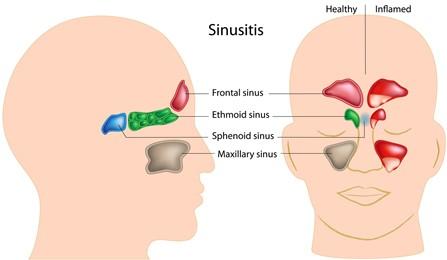Balloon Sinuplasty vs. Traditional Sinus Surgery: Which Is Right for You?

Understanding Chronic Sinusitis and Why Surgery Might Be Needed
If you suffer from frequent sinus infections, constant nasal congestion, facial pressure, or post-nasal drip, you may be living with chronic sinusitis—a condition that affects millions of people every year. When medications and lifestyle changes aren’t enough to relieve symptoms, your ENT specialist may recommend surgery to restore proper sinus drainage and relieve inflammation. But how do you know which approach is right for you—Balloon Sinuplasty or Traditional Sinus Surgery?
At Pacific View ENT in Camarillo, we believe that patient education is key to better outcomes. In this blog, we’ll explore the differences between balloon sinuplasty and traditional sinus surgery, explain who qualifies for each option, and help you decide which procedure may be best for your unique needs.
What Is Balloon Sinuplasty?
Balloon sinuplasty is a minimally invasive procedure designed to open blocked sinus passageways and restore natural drainage. It’s often compared to balloon angioplasty used in cardiology.
During the procedure, a small, flexible catheter with a tiny balloon at its tip is inserted into the blocked sinus opening. Once correctly positioned, the balloon is gently inflated to widen the sinus passage. The balloon is then deflated and removed, leaving the sinus pathway open for better airflow and drainage.
Unlike traditional surgery, balloon sinuplasty doesn’t involve cutting or removing bone or tissue. It is often performed in-office under local anesthesia and is associated with minimal downtime.
You can learn more about this technique on our Balloon Sinuplasty service page.
What Is Traditional Sinus Surgery?
Traditional sinus surgery—often referred to as endoscopic sinus surgery—involves using a thin, flexible camera (endoscope) inserted into the nasal passages. Through this approach, your ENT surgeon can directly remove obstructions such as nasal polyps, thickened tissue, or bony structures that are preventing proper drainage.
This surgery is typically done under general anesthesia and may be necessary for patients with more severe or complex sinus conditions, such as:
- Extensive chronic sinusitis
- Severe nasal congestion
- Structural abnormalities like a deviated septum
- Presence of nasal polyps
- Fungal sinus infections
- Complications of sinusitis affecting the eyes or brain
Because traditional sinus surgery allows for more extensive correction, it is often recommended when balloon sinuplasty is not sufficient.
Key Differences Between the Two Procedures
Let’s break down some of the most important distinctions between balloon sinuplasty and traditional sinus surgery:
1. Invasiveness:
Balloon sinuplasty is considered non-invasive with no cutting or removal of tissue, while traditional surgery may involve removing bone or tissue to open the sinuses.
2. Anesthesia Requirements:
Balloon sinuplasty can be performed in the office using local anesthesia. Traditional surgery typically requires general anesthesia in an operating room setting.
3. Recovery Time:
Recovery from balloon sinuplasty is often just a couple of days, while recovery from traditional sinus surgery may take a week or longer with more post-operative care.
4. Risks and Complications:
Both procedures are safe, but traditional surgery carries slightly more risk due to its invasive nature, such as bleeding or infection.
5. Scope of Treatment:
Balloon sinuplasty is effective for mild to moderate cases of chronic sinusitis. Traditional surgery is often required for more severe, recurrent, or structurally complex conditions.
Who Is a Good Candidate for Balloon Sinuplasty?
You may be a candidate for balloon sinuplasty if:
- You’ve had chronic sinus infections lasting 12 weeks or longer
- Medications such as nasal sprays or antibiotics haven’t resolved the issue
- Your CT scan or nasal endoscopy shows partial blockage of sinus openings
- You don’t have extensive nasal polyps or severe structural issues
- You’re looking for a quicker, less invasive option with faster recovery
At Pacific View ENT, we may recommend balloon sinuplasty after evaluating your symptoms, history, and imaging results. It’s a popular option for patients seeking relief without the burden of surgical downtime.
When Traditional Sinus Surgery Might Be the Better Choice
For some patients, a more traditional surgical approach is the only path to lasting relief. You might require traditional sinus surgery if:
- You have recurring infections not responding to treatment
- You suffer from severe nasal blockage or polyps
- There is significant anatomical abnormality
- Previous sinus surgeries have failed
- Imaging reveals more complex disease
These cases often require precise removal of diseased tissue or correction of anatomical issues that balloon dilation alone cannot fix.
What to Expect After Each Procedure
After Balloon Sinuplasty:
-
Most patients return to normal activities within 24–48 hours
-
Mild discomfort or nasal drainage may occur
-
Saline rinses and over-the-counter pain relievers help ease symptoms
-
No need for nasal packing or stitches
After Traditional Sinus Surgery:
- Recovery may take up to 1–2 weeks
- You may experience nasal congestion, drainage, or light bleeding
- Follow-up visits are needed to clean the sinuses and monitor healing
- Post-op care may include nasal sprays and rinses
Are the Results Long-Lasting?
Yes, both procedures are highly effective for relieving sinus symptoms. In clinical studies, balloon sinuplasty showed success rates of over 90%, with significant improvements in breathing, sleep, and quality of life two years post-procedure.
Traditional surgery has a longer track record and is often the go-to option for more complex conditions. When performed by an experienced ENT, it offers durable results—especially when paired with ongoing allergy treatment and preventive care.
Managing Chronic Sinusitis After Surgery
Regardless of the type of procedure you undergo, ongoing care is important to prevent recurrence. Strategies include:
- Daily nasal saline rinses
- Managing nasal allergies
- Avoiding environmental triggers
- Routine check-ups with your ENT
- Staying hydrated and using a humidifier in dry climates
What About Insurance Coverage?
Most insurance plans, including Medicare, cover balloon sinuplasty and traditional sinus surgery when deemed medically necessary. Our administrative team at Pacific View ENT can help confirm your benefits and explain your out-of-pocket costs prior to treatment.
Which Treatment Should You Choose?
The choice between balloon sinuplasty and traditional sinus surgery depends on many factors—your sinus anatomy, medical history, lifestyle, and personal preferences.
If you’re looking for a less invasive treatment with faster recovery and meet the clinical criteria, balloon sinuplasty may be a great fit. However, if your condition is more severe or you’ve already tried other treatments with no success, traditional sinus surgery may offer the comprehensive solution you need.
During your evaluation, Dr. Armin Alavi will take the time to review your symptoms, perform diagnostic imaging, and explain both options in detail. Our goal is to provide a personalized plan that gives you lasting relief and supports your long-term health.
Your Trusted ENT Clinic in Camarillo
If chronic sinus symptoms are interfering with your daily life, don’t wait. At Pacific View ENT in Camarillo, we specialize in diagnosing and treating sinus and nasal conditions using the most up-to-date tools and techniques—including Balloon Sinuplasty and Sinus Surgery.
Dr. Armin Alavi brings years of expertise and compassionate care to every patient consultation. Whether you need a simple procedure or a more complex solution, our team is here to help you breathe easier.
📞 Call us at (805) 335-1690 during business hours (8 AM – 5 PM)
📩 Or fill out our contact form to request an appointment. One of our representatives will follow up to schedule your visit as soon as possible.
Disclaimer:
This blog is intended for general awareness and informational purposes only. It does not provide medical advice, diagnosis, or treatment. If you are experiencing sinus issues or related symptoms, please consult with a licensed ENT specialist for an evaluation and personalized recommendations.
- Vibnix Blog
- Politics
- News
- Liberia News
- Entertainment
- Technology
- Educaţie
- Art
- Causes
- Crafts
- Dance
- Drinks
- Film
- Fitness
- Food
- Jocuri
- Gardening
- Health
- Home
- Literature
- Music
- Networking
- Alte
- Party
- Religion
- Shopping
- Sports
- Theater
- Wellness


